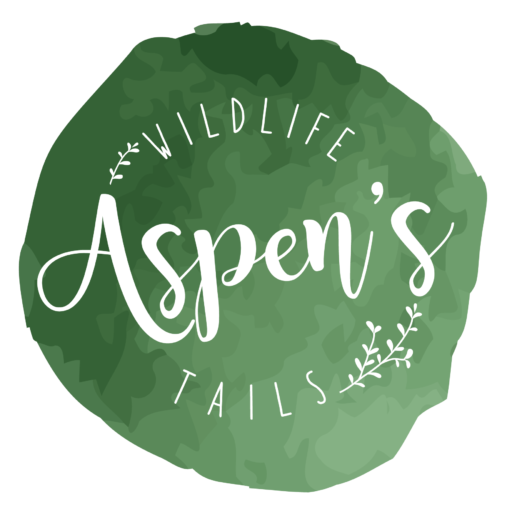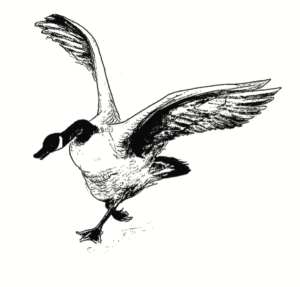Slam! Aspen’s foot smashed a cockroach that crossed the floor in front of her. Pinching the bug between her thumb and pointer finger, she picked it up by a leg, its two-inch dark brown body dangling from her fingers. Aspen grabbed Trinity’s enclosure key and took the bug outside to its final demise. Unlocking the door was tricky with a cockroach in one hand, and the keys in the other. Aspen knelt in front of Trinity’s igloo; a little pink nose peeked out from the covers, sniffing the air. It took her no time to locate the cockroach and snap it up. Little cockroach legs dangled from the opossum’s mouth; she used her front arm to make sure it didn’t get loose as she chewed the crunchy roach. It only took a few chomps, a swallow and it was gone. “Yummy, Trinity? You love your roaches.” Trinity sniffed the air, hoping for more. Once she realized that was it, she burrowed back under her covers.
Aspen locked the enclosure and returned to the back porch, which had a metal roof and three walls of screen, the fourth wall being the back of the building. The porch housed animals that were getting ready for released. After being rehabilitated in the shelter of the air-conditioned, weather proof building animals needed to acclimate to the more natural conditions of South Carolina before release.
Currently, the porch was home to four squirrels housed in a large metal cage at least eight feet tall, four feet wide and twelve feet deep. The inside was lined with pine straw and several logs, which lay angled from one side to the other. Small cardboard boxes were zip tied to the top of the cage walls. These provided hiding spots for the squirrels. Today was hot, over a hundred degrees, and the squirrels lounged on the logs, stretched out on their bellies like dogs. These were the last of the spring squirrels, born late in the season they would be released soon. The remainder of the porch had smaller cages; double decker’s that housed opossums. The porch stunk of the opossum poop. That was one of the first things Aspen learned as a young volunteer. That smell was so unique and ripe she would never forget it.
Aspen went from cage to cage, rolling up the poop-covered newspapers that lined the cage bottom replacing them with new clean papers. Some of the opossums were curious, sniffing her forearms as she worked. Others were frightened; poised in the corner of the cage trying to look as fierce as possible. She knew they were just trying to scare her away because they were frightened, so she worked quickly. Fourteen cages later, she was almost done, and quickly filled all the water bottles and food dishes before double checking all the cages were locked, so nothing escaped!
Opossums being nocturnal, they just got crunchies during the day to snack on, with a regular meal given in the evening. The opossums were happy to have a clean place to sprawl out during the hot summer heat. By the time she was finished many of them were back to sleep, lying on their backs with their bellies and funny little feet sticking up in the air, like a cat. Silly opossums, Aspen said to herself as she collected the trash, carrying it to the dumpster outside. Aspen learned as a summer junior volunteer years ago that you had to be a hard worker and that working at the center was not just playing with animals like many of her friends thought. Her brother, excited to hear about her job, was quickly bored by the description of her first few days. For some reason he envisioned his sister as a princess; Snow White or Cinderella, playing and singing to wild animals all day. The thought made Aspen laugh; she felt more like a housekeeper for wildlife.
Back inside, Aspen learned a fawn, caught by a dog was just admitted. The animal had lots of bite marks on its neck and body and was in bad shape. Dusty placed it on a blanket on the floor in the corner of ISO and gently placed a soft hand towel over its eyes. The less it could see the better. Nicole hooked up an IV that dripped slowly, giving the fawn subcutaneous fluids. It was also given a shot to help calm it. Aspen knew fawns, being prey animals, were very high stress and could die from the fear they experienced due to being chased by a dog, or handled by a human. This fawn was experiencing capture myopathy; fear completely paralyzed it. All it could do was lay there. Aspen knew its chances were not good. Fawns were one of the most delicate animals to care for, right up there with bunnies.
Dusty and Aspen found Kim in the office to update her. She hung up the phone as they walked in. “What’s up?” Dusty asked while sitting in one of the office chairs, slowly spinning in a circle.
Kim replied, “Someone has kept a fawn for eight weeks. That fawn is going to be thoroughly imprinted and not have a healthy fear of humans. It may never be able to be released.” Dusty was not shocked at all; he had seen many animals people tried to care for at home or made into a pet. Last fall, they got in an adult opossum that was kept for eight months, the “owners” were going on vacation, and no kennels would house an opossum! It turned out they had not been feeding it a balanced diet, and it had metabolic bone disease, which caused its bones to be fragile and painful. If the disease is caught early in life, it can be stopped from worsening by following a strict diet.
Kim rattled of some directions to Dusty and sped out to make a fundraising meeting. She spent half her time at the center caring for the animals with Dusty and the staff; the other half was spent raising funds to keep the doors open. The center was run solely on donations from the public; being a non-profit was often a struggle, but Kim loved it. As she left, a family came in carrying a small cardboard box. Dusty met them at the intake window. “Hey there, what ya got for us?” he said in his laid-back tone.
The mom answered, “A turtle, the kids found in our back yard.”
“Is there anything wrong with him?” Dusty asked taking the box from the mom, while her three children stood on tippy toes peering through the window to see all the activity going on behind Dusty.
“I don’t think so,” she said, “but he was in our backyard.” Dusty looked blankly at her a little confused. “Well our yard is fenced, how did he get there? How would he get out?” Dusty was inspecting the healthy box turtle in his hands, as he explained that turtles could dig, and probably dug his way into her yard, and could easily dig his way back out.
“This big guy is okay; he doesn’t need to be here. The best thing you can do for him is put him back,” he explained confidently.
“But shouldn’t he be in the wild?” she replied.
“Yes, that’s exactly where he was. To him, your yard is the wild. He probably lived there before your house was even built. He doesn’t understand it’s YOUR yard,” Dusty explained. “Turtles live in a home range of about a half-mile, and if you remove them, they will do everything in their power to get back. The best thing for him is for you to put him back where you found him. You can just put him in your garden, or on the other side of your fence if you really want to.”
One of the older kids piped up, “So, it’s like the turtle has GPS?”
“Exactly!” said Dusty with a smile, knowing the kid got it.
“Alright,” said the mom reluctantly. “We can take him back, and maybe he will visit us again. Thanks for letting me know. I just figured he was lost and needed help.”
“No problem,” said Dusty, placing the turtle back in the box and handing it to her. “Do you have any dogs?”
“No, why?” she replied reaching for the box.”
“Sometimes dogs think turtles are chew toys.” Dusty walked out to the lobby, the kids scattering. “See Shelby here?” he said lifting the lid of a nearby turtle enclosure, the bottom covered in a few inches of dirt, a water dish in the middle and two little half logs provided hiding places for the two box turtles that lived there. Dusty lifted out a cute little box turtle, about four inches in length covered in dirt. “You can see where a dog has chewed Shelby’s shell, around the edges, here.” The children closed in around him, gazing at the turtle’s shell, which was rippled and ragged. “She can’t close up her shell anymore because of the damage, so she lives here with us now. She is one of our education animals, and goes out on field trips to meet people like you and teach them about turtles.”
One of the little girls was tugging on the corner of her mom’s shirt, “Yes, honey?”
“Mom, I think I’ve met this turtle before. They came to our school last year. Remember, I told you all about it. I met a three-legged opossum that day too!” she said with a smile.
“That’s right,” Dusty said, “That’s Trinity, our education opossum.” The little girl smiled at Dusty, and he could see she was missing a front tooth. Dusty let them each take a moment to pet Shelby, before placing her back in the enclosure. Then he said goodbye to the family as they left to release the box turtle back to the wild.


